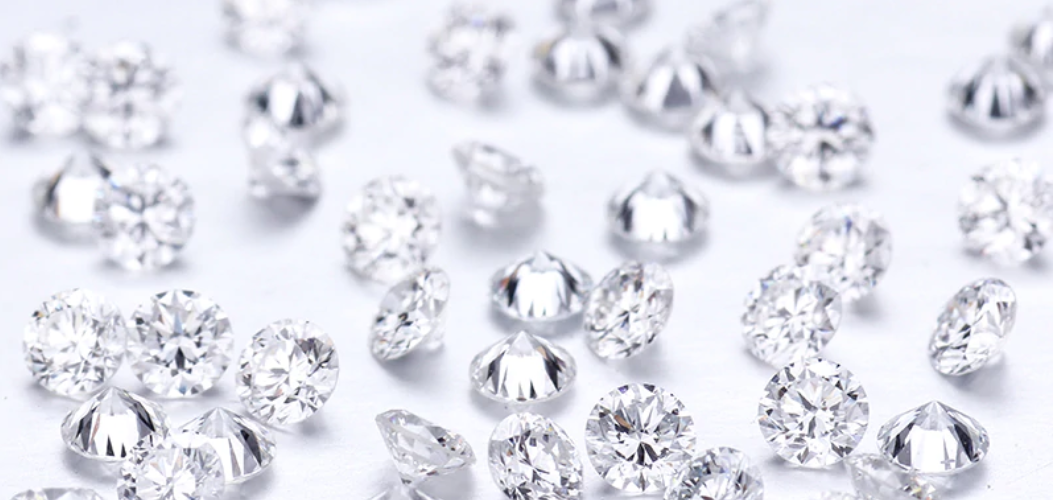The diamond industry has undergone a significant transformation with the introduction of lab-grown diamonds. These man-made gems have sparked debates among consumers, jewelers, and environmentalists about their value, quality, and ethical implications. In this article, we will explore the key differences between lab-grown diamonds and natural (real) diamonds, helping you make an informed decision when choosing between the two.
Table of Contents
What Are Lab-Grown Diamonds?
Lab-grown diamonds vs real, also known as synthetic or cultured diamonds, are created in controlled laboratory environments using advanced technological processes. These diamonds have the same physical, chemical, and optical properties as natural diamonds but are produced in weeks rather than over billions of years.
How Are Lab-Grown Diamonds Made?
There are two primary methods for creating lab-grown diamonds:
High Pressure High Temperature (HPHT):
This method mimics the natural conditions under which diamonds form in the Earth’s mantle. A small diamond seed is placed in carbon and subjected to extreme pressure and high temperature, resulting in the growth of a larger diamond.
Chemical Vapor Deposition (CVD):
In this process, a diamond seed is placed in a chamber filled with carbon-rich gas. The gas is ionized into plasma, causing carbon atoms to bond to the seed and form a diamond layer.
What Are Natural (Real) Diamonds?
Natural diamonds are formed deep within the Earth’s mantle under extreme heat and pressure over billions of years. They are brought to the surface through volcanic eruptions and are mined from kimberlite pipes or alluvial deposits.
How Are Natural Diamonds Mined?
Diamond mining involves several methods, including open-pit mining, underground mining, and alluvial mining. These processes can be labor-intensive and have significant environmental and social impacts, which has led to increased interest in lab-grown alternatives.
Key Differences Between Lab-Grown and Natural Diamonds
While lab grown diamonds and natural diamonds are nearly identical in appearance and composition, several factors distinguish them.
1. Origin and Formation
The most obvious difference is their origin. Natural diamonds are a product of geological processes, while lab-grown diamonds are created by humans using advanced technology.
2. Cost
Lab-grown diamonds are generally 30-50% cheaper than natural diamonds of similar size and quality. This price difference is due to the shorter supply chain and lower production costs associated with lab-grown stones.
3. Environmental Impact
Lab-grown diamonds are often marketed as a more sustainable option because they do not require mining. However, their production still consumes significant energy, especially in the case of HPHT diamonds. Natural diamond mining can lead to habitat destruction, water pollution, and carbon emissions, though some companies are adopting more eco-friendly practices.
4. Rarity and Value
Natural diamonds are valued for their rarity and geological history, which can influence their long-term resale value. Lab-grown diamonds, being mass-produced, may not hold their value as well over time.
5. Certification and Grading
Both lab-grown and natural diamonds are graded by gemological institutes like the GIA (Gemological Institute of America) and IGI (International Gemological Institute). However, lab-grown diamonds are often inscribed with a laser marking to indicate their synthetic origin.
Pros and Cons of Lab-Grown Diamonds
Advantages
- Affordability: Lower price for the same carat weight and quality.
- Ethical Sourcing: No association with conflict diamonds or exploitative labor practices.
- Customization: Ability to produce diamonds in specific colors and sizes.
Disadvantages
- Depreciation: May not retain value like natural diamonds.
- Perception: Some buyers prefer the authenticity of natural stones.
- Energy Use: Production can be energy-intensive depending on the method used.
Pros and Cons of Natural Diamonds
Advantages
- Prestige: Natural diamonds have a long-standing cultural and historical significance.
- Investment Potential: High-quality natural diamonds can appreciate in value.
- Unique Characteristics: Each natural diamond has distinct inclusions and features.
Disadvantages
- Higher Cost: More expensive than lab-grown alternatives.
- Ethical Concerns: Potential links to unethical mining practices.
- Environmental Impact: Mining can cause ecological damage.
Which One Should You Choose?
The choice between lab-grown and natural diamonds depends on personal preferences, budget, and values.
- Choose Lab-Grown If: You want an affordable, ethically sourced, and environmentally conscious option.
- Choose Natural If: You value tradition, rarity, and potential investment value.
Conclusion
Both lab-grown and natural diamonds have their own merits and drawbacks. Lab-grown diamonds offer a modern, cost-effective, and ethical alternative, while natural diamonds carry centuries of allure and prestige. By understanding the differences between the two, you can make a decision that aligns with your priorities, whether they be budget, sustainability, or sentimental value.
As technology advances, lab-grown diamonds are becoming increasingly indistinguishable from natural ones, making them a compelling choice for the next generation of diamond buyers. However, the timeless appeal of natural diamonds ensures they will remain a cherished option for years to come.




